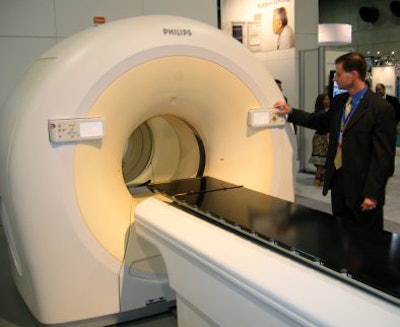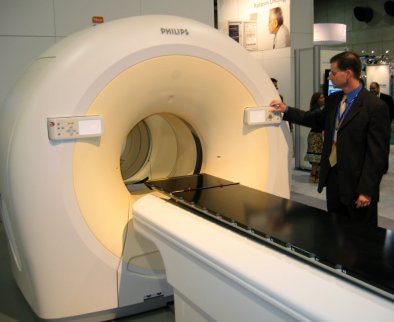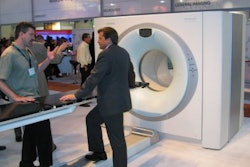
A new PET/CT system based on time-of-flight (TOF) technology was the Society of Nuclear Medicine (SNM) highlight for Philips Medical Systems. The Andover, MA, company also discussed enhancements to its JETStream workstation platform.
Gemini TF uses what Philips calls TruFlight technology, the company's term for time-of-flight imaging. In addition to detecting scintillation events, TruFlight also records the difference in time from when annihilation events reach the PET camera's detector crystals. This results in reduced noise and better clarity, according to Scott Smith, senior product manager for nuclear medicine PET marketing.
The clinical benefits of TruFlight are the ability to visualize smaller lesions, and Gemini TF systems should also see improved performance when imaging larger patients, traditionally a problem with PET.
Gemini TF was first introduced at the European Congress of Radiology (ECR) meeting earlier this year, and Philips expects full commercial release of the system by the end of June. The system will be available in 16- and 64-slice configurations.
 |
| Gemini TF uses time-of-flight technology. |
Philips also introduced version 3.0 of its JETStream Workspace. The new release includes workflow and image display enhancements, as well as upgraded clinical applications for cardiac, bone, renal, salivary, and brain imaging
For the company's Precedence SPECT/CT systems, Philips demonstrated clinical cases in which the technology is adding value. Precedence is available in six- and 16-slice models.
By AuntMinnie.com staff writers
June 7, 2006
Related Reading
Philips unveils Asia-Pacific learning center, June 7, 2006
Philips donates iSite to UNC, June 6, 2006
Philips signs Health First, June 2, 2006
Philips makes ultrasound donation, May 30, 2006
Klein report names Philips top ultrasound vendor, May 17, 2006
Copyright © 2006 AuntMinnie.com




















